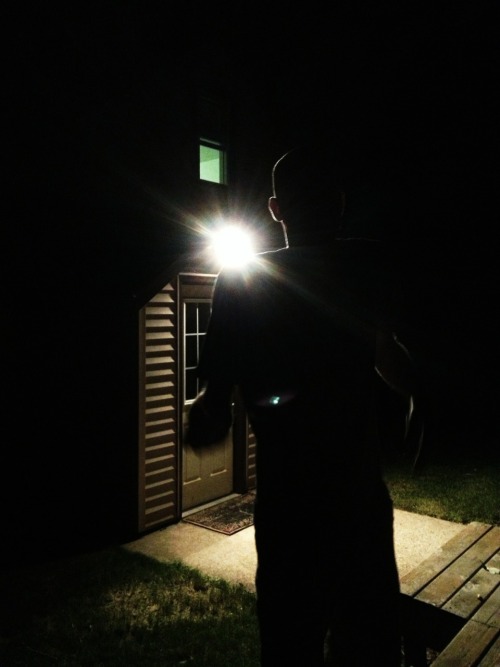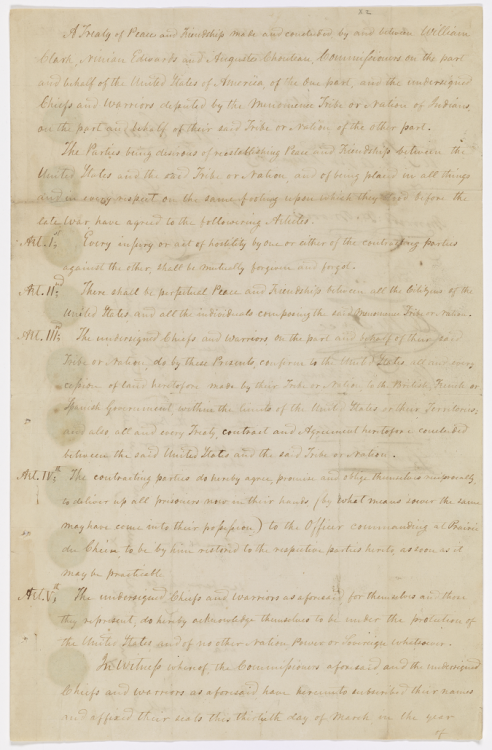#wisconsin

Thank you @nymeriafire for this sexy submission! I think you all should follow her, learn from her example and send in your content
A camper finds insect eggs under a lily pad in Wisconsin, 1974. Photograph by Steve Raymer, National Geographic Creative
Post link
Janesville, Wisconsin: This girl is looking for her furever home! Could it be you? ❤️
“Hi I’m Beautiful. Not to sound conceited - that’s my name! You can tell the name fits me well, I’m a more unique cat with all the right features. At six-years-old, I would like to spend my days receiving tasty treats and cuddling with my favorite person. Lets get to know each other, come in to the Humane Society of Southern Wisconsin today to spend some time with me!"
To learn how you can adopt Beautiful, head on over to https://www.petsgohome.org/adopt/.
Post link
Treaty Between the United States and the Menominee Indians Signed at St. Louis, 3/30/1817
“The Parties being desirous of reestablishing Peace and Friendship between the United States and the said Tribe or Nation …”
The Menominee had been allied with the British during the War of 1812.
File Unit: Ratified Indian Treaty 86: Menominee - St. Louis, March 30, 1817, 1789 - 1869
Series: Indian Treaties, 1789 - 1869
Record Group 11: General Records of the United States Government, 1778 - 2006
Transcription:
X2 [Written on the top]
A Treaty of Peace and Friendship made and concluded by and between William
Clark, Ninian Edwards, and Auguste Chouteau, Commissioners on the part
and behalf of the United States of America, of the one part, and the undersigned
Chiefs and Warriors deputed by the Menomenee Tribe or Nation of Indians,
on the part and behalf of their said Tribe or Nation of the other part.
The Parties being desirous of reestablishing Peace and Friendship between the
United States and the said Tribe or Nation, and of being placed in all things
and in every respect the same footing upon which they stood before the
late war have agreed to the following Articles.
Art. Ist; Every injury or act of hostility by one or either of the contracting parties
against the other, shall be mutually forgiven and forgot.
Art. IInd; There shall be perpetual Peace and Friendship between all the Citizens of the
United States and all the individuals composing the said Menonemee Tribe or Nation.
Art. IIIrd; The undersigned Chiefs and Warriors, on the part and behalf of their said
Tribe or Nation, do by these Presents, confirm to the United States all and every
cession of land heretofore made by their Tribe or Nation to the British, French or
Spanish Government, within the limits of the United States or their Territories;
and also all and every Treaty , contract and Agreement heretofore concluded
between the said United States and the said Tribe or Nation.
Art. IVth; The contracting parties do hereby agree, promise and oblige themselves reciprocally,
to deliver up all prisoners now in their hands (by what means soever the same
may have come into their possession) to the Officer Commanding at Prairie
du Chein to be by him restored to their respective parties hereto, as soon as it
may be practicable
Art. Vth; The undersigned Chiefs and Warriors as aforesaid for themselves and those
they represent; do hereby acknowledge themselves to be under the protection of
the United States and of no other Nation Power of Sovereign whatsoever.
In Witness whereof, the Commissioners aforesaid and undersigned
Chiefs and Warriors as aforesaid have hereunto subscribed their names
and affixed their seals this thirtieth day of March in the year
of
[page 2]
of our Lord one thousand eight hundred and seventeen and of the
Independence of the United States the Forty First.
Done at St. Louis in the presence of
[left column]
[signed] R. Wash, Secty to the }
Commissioners }
[signed] R. Graham
U.S. I. A. for Illinois Terty
[signed] T. Harrison
[signed] Nimrod H. Moore
[signed] S. Ganntt
Lieut. U.S. Army
[signed] CM Price
[signed] Richard T. McKenney
[signed] Amos Kibbe
[signed] Nathaniel Mills
[signed] Sam Solomon
[right column]
[signed] William Clark [seal]
[signed] Ninian Edwards [seal]
[signed] Aug. Chouteau [seal]
To-wa-na-pee
Roaring Thunder [his x mark] [seal]
Wee-Kay
The Calumet Eagle [his x mark] [seal]
Mue-quo-mo-ta
The Fat of the Bear [his x mark] [seal]
Wa-ca-quon or
Sho-min [his x mark] [seal]
War-ba-no
The Dawn [his x mark] [seal]
In-e–mi-kee
Thunderer [his x mark] [seal]
Le-bar-na-co
The Bear [his x mark] [seal]
Kar-Kun-de-go [his x mark] [seal]
Sha-Sha-ma-nee
The Elk [his x mark] [seal]
Pe-no-name
The Running Wolf [his x mark] [seal]
Post link
This Week in History:
January 6, 1838 - Samuel Morse demonstrates telegraph
“On this day in 1838, Samuel Morse’s telegraph system is demonstrated for the first time at the Speedwell Iron Works in Morristown, New Jersey. The telegraph, a device which used electric impulses to transmit encoded messages over a wire, would eventually revolutionize long-distance communication, reaching the height of its popularity in the 1920s and 1930s.
Samuel Finley Breese Morse was born April 27, 1791, in Charlestown, Massachusetts. He attended Yale University, where he was interested in art, as well as electricity, still in its infancy at the time. After college, Morse became a painter. In 1832, while sailing home from Europe, he heard about the newly discovered electromagnet and came up with an idea for an electric telegraph. He had no idea that other inventors were already at work on the concept.
Morse spent the next several years developing a prototype and took on two partners, Leonard Gale and Alfred Vail, to help him. In 1838, he demonstrated his invention using Morse code, in which dots and dashes represented letters and numbers. In 1843, Morse finally convinced a skeptical Congress to fund the construction of the first telegraph line in the United States, from Washington, D.C., to Baltimore. In May 1844, Morse sent the first official telegram over the line, with the message: “What hath God wrought!”
Over the next few years, private companies, using Morse’s patent, set up telegraph lines around the Northeast. In 1851, the New York and Mississippi Valley Printing Telegraph Company was founded; it would later change its name to Western Union. In 1861, Western Union finished the first transcontinental line across the United States. Five years later, the first successful permanent line across the Atlantic Ocean was constructed and by the end of the century telegraph systems were in place in Africa, Asia and Australia.
Because telegraph companies typically charged by the word, telegrams became known for their succinct prose–whether they contained happy or sad news. The word “stop,” which was free, was used in place of a period, for which there was a charge. In 1933, Western Union introduced singing telegrams. During World War II, Americans came to dread the sight of Western Union couriers because the military used telegrams to inform families about soldiers’ deaths.
Over the course of the 20th century, telegraph messages were largely replaced by cheap long-distance phone service, faxes and email. Western Union delivered its final telegram in January 2006.
Samuel Morse died wealthy and famous in New York City on April 2, 1872, at age 80.”
This week in History:
January 5, 1933 - Construction on Golden Gate Bridge begins
January 6, 1912 - New Mexico joins Union
January 7, 1927 - Harlem Globetrotters play their first game
January 8, 1946 - Elvis Presley receives first guitar
January 9, 1768 - First modern circus is staged
January 10, 1901 - Gusher signals start of U.S. oil industry
January 11, 1908 - Roosevelt makes Grand Canyon a national monument
This carte-de-visite of Samuel Morse and his telegraph can be found in the online collection of the Wisconsin Veterans Museum.
Post link

Hobnob Supper Club, Racine via Rick Nelson

Cafe Centraal via Visit Milwaukee

Milwaukee via Matthew Tollander

Milwaukee Art Museum via Mirage Man

Chequamegon–Nicolet National ForestviaTravel Wisconsin
Last week……
Randomly drove around the entire state. Met many great owners, managers and bartenders………….
2022 we will introduce the Wisconsin Passport Biker Book.
We have bars from the southern border to Superior all the way to Washington Island.
Maxing this one out at 50 establishments.
Have a favorite let us know…..
#wisconsin #WI #allwhowanderarenotlost #pokerrun #bikerbook #wastedspace #wastedspaceevents #motorcycle #travel #explore (at Wisconsin)
https://www.instagram.com/p/CR4_N4zIdIO/?utm_medium=tumblr
Post link

















